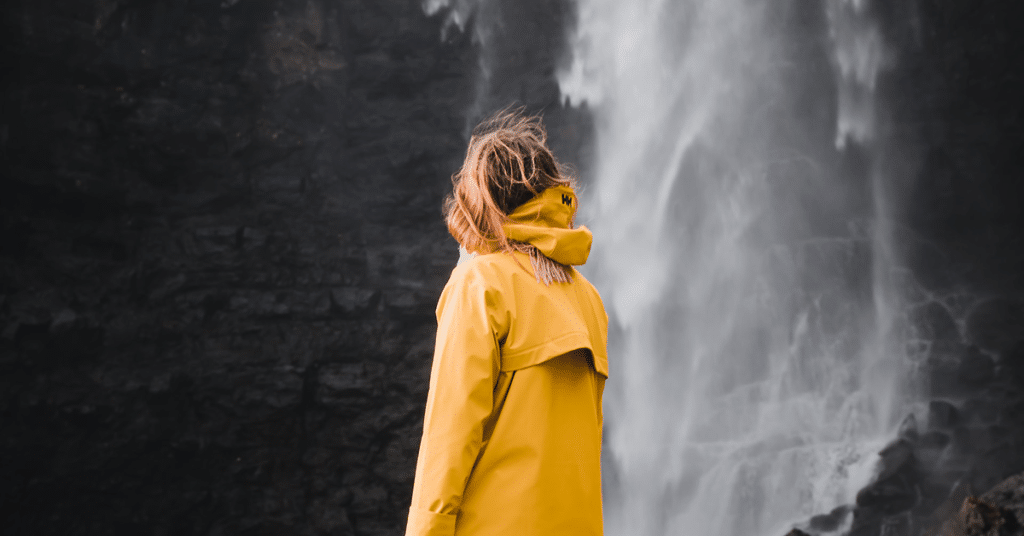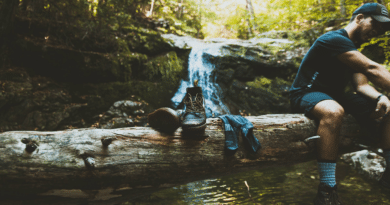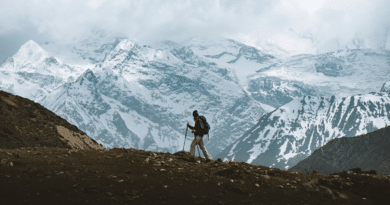Best Helly Hansen Dry Bags for Outdoor Sports
Helly Hansen dry bags are specialized waterproof bags designed to keep your belongings dry and protected from water, moisture, and other environmental elements, making them ideal for various outdoor and water-based activities.
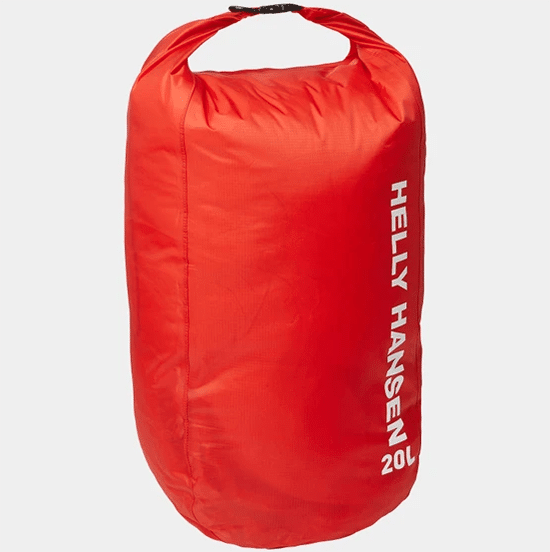
They are typically made from durable, waterproof materials and are commonly used in activities such as kayaking, canoeing, camping, hiking, boating, and any situation where there’s a risk of exposure to water or wet conditions.
Helly Hansen
Helly Hansen is a Norwegian company that specializes in outdoor and workwear clothing and equipment. Founded in 1877 by Helly Juell Hansen in Moss, Norway, the company has a long history and is well-regarded for its high-quality outdoor gear, particularly in the maritime and outdoor industries.
Helly Hansen initially began by producing waterproof clothing for sailors, and over the years, it expanded its product range to cater to various outdoor activities.
Some key points about Helly Hansen include:
Maritime Roots: Helly Hansen initially gained recognition for its innovative waterproof clothing and gear designed for sailors and fishermen. Their products were known for their durability and ability to withstand harsh weather conditions at sea.
Outdoor and Workwear: While the company’s roots are in maritime apparel, it has since diversified its product range to include outdoor clothing and equipment for activities such as skiing, hiking, and other outdoor adventures. Helly Hansen also offers workwear designed for professionals in various industries, including construction, oil and gas, and emergency services.
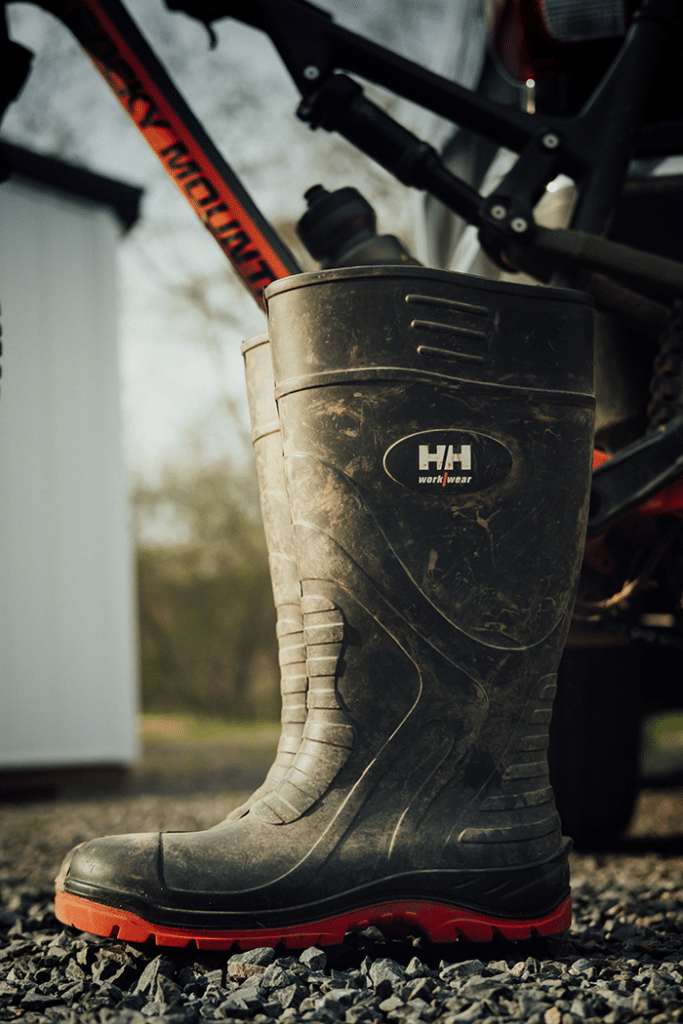
Innovation: Helly Hansen has a history of innovation in outdoor apparel and gear. They have introduced advanced materials and technologies to enhance the performance, comfort, and safety of their products.
Global Presence: Helly Hansen has a global presence and is sold in many countries around the world. It has established a strong retail presence, both through its own stores and through partnerships with other retailers.
Endorsements: The brand has received endorsements from professional athletes, adventurers, and outdoor experts, which have contributed to its reputation for quality and performance.
Sustainability: In recent years, Helly Hansen has also focused on sustainability by incorporating eco-friendly materials and manufacturing processes into its products, aligning with growing consumer demands for environmentally responsible products.
Overall, Helly Hansen is a well-established and respected brand known for its heritage, quality, durability, and innovation in the outdoor and workwear industries. Its products are popular among outdoor enthusiasts, professionals, and anyone who requires high-quality outdoor gear designed to withstand challenging conditions.
Helly Hansen Ocean Dry Bag
Heavy-duty dry bag to keep your items shielded from water.

A dependable, waterproof dry bag is a must-have for boat life. Helly Hansen constructed this dry bag to keep your essentials safe in bad weather and rough seas.
The Ocean dry bag has extra-strong 420D nylon with waterproof TPU backing. They reinforced the watertight properties by using highly durable and leak-proof radio-frequency welded seams.
It closes with a secure roll-top and buckle. A removable shoulder strap makes it easy to carry when loading and unloading the boat.
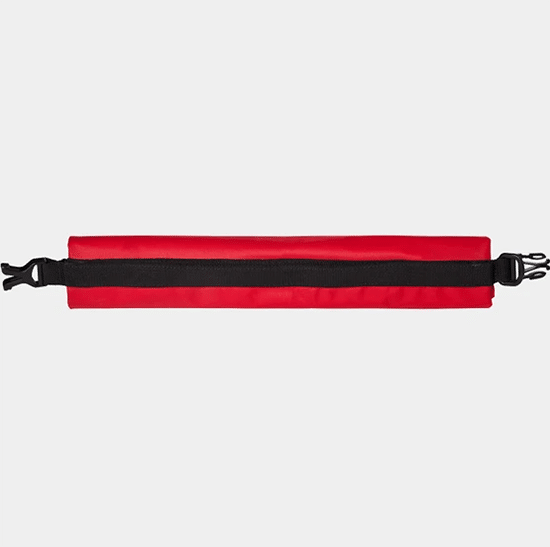
Although designed for water sports, this dry bag is useful anytime you need extra protection from the elements.
Weight: 450g (20L)
Features
- Made from 420D Nylon with TPU backing
- Roll-top with buckle closure
- D-ring attachment point
- Removable shoulder strap
- Radio Frequency welded seams ensure complete waterproofness
- Note: these bags do not provide waterproof protection if completely submerged
- STD
Comes in L and XL sizes.
Helly Hansen Light Dry Bag
Lightweight dry bag that is excellent for outdoor adventures
A dependable, waterproof bag is a must-have for boat life. Dry bags are also useful on almost any adventure where you need extra protection from the elements.
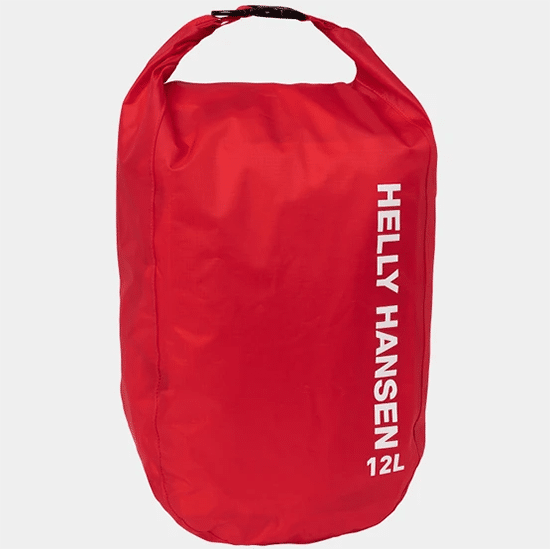
This dry bag is a compact, light dry bag designed to keep your essentials safe in bad weather and rough seas.
Helly Hansen built it using durable 70D nylon with waterproof TPU backing and fully sealed seams to keep moisture out.
The bag has a secure roll-top with buckle closure. It also has a D-ring attachment point.
Weight: 220g (L)
Features
- Made from lightweight 70D Nylon with TPU backing
- Roll-top with buckle closure
- D-ring attachment point
- Fully taped seams to keep out water
Comes in 20L, 12L, 7L and 3L sizes.
Why is Helly Hansen Outdoor Equipment so well Respected?
Helly Hansen is well-respected in the outdoor equipment industry for several reasons:
Quality and Durability: Helly Hansen has a long history of producing high-quality outdoor gear that is known for its durability. Their products are designed to withstand harsh weather conditions and rigorous outdoor activities, making them a favorite among outdoor enthusiasts and professionals.
Innovation: Helly Hansen has a reputation for innovation in outdoor apparel and equipment. They often incorporate advanced materials and technologies into their products to enhance performance, comfort, and safety. This commitment to innovation has helped them stay at the forefront of the industry.
Heritage: The company was founded in 1877 in Norway, and it has a rich heritage in the maritime and outdoor industries. This heritage lends credibility to their products and is often associated with a commitment to quality and authenticity.
Functionality: Helly Hansen’s gear is designed with functionality in mind. Their products are tailored to the specific needs of outdoor enthusiasts, whether it’s for sailing, skiing, hiking, or other outdoor activities. This focus on functionality ensures that their gear performs well in real-world conditions.
Protection from Extreme Weather: Helly Hansen is especially well-known for its foul-weather gear, including waterproof and insulated jackets, pants, and gloves. These products are trusted by professionals in industries like fishing, sailing, and offshore oil drilling, where protection from extreme weather is essential.
Sustainability: In recent years, Helly Hansen has made efforts to be more environmentally responsible. They have introduced sustainable materials and practices in their manufacturing processes, which aligns with the growing consumer demand for eco-friendly products.
Global Presence: Helly Hansen has a global presence and is widely available in many countries. This availability, along with their reputation for quality, makes them a go-to brand for outdoor enthusiasts around the world.
In summary, Helly Hansen is well-respected in the outdoor equipment industry due to its commitment to quality, innovation, functionality, and durability, as well as its rich heritage and global presence. These factors have earned the brand a strong reputation among outdoor enthusiasts and professionals alike.
What are the Benefits of Helly Hansen Dry Bags?
Waterproof Protection: Helly Hansen dry bags are designed to provide excellent waterproof protection for your belongings. They are typically made from high-quality, waterproof materials and feature reliable sealing mechanisms like roll-top closures or waterproof zippers to keep your gear dry even in wet and challenging conditions.
Durability: Helly Hansen is known for producing durable outdoor gear. Their dry bags are likely constructed from robust materials that can withstand the rigors of outdoor activities, including abrasion and exposure to harsh elements.
Versatility: Helly Hansen dry bags come in various sizes and capacities, making them suitable for a wide range of outdoor activities. Whether you’re kayaking, hiking, camping, or simply need a waterproof bag for travel, you can find a dry bag size that suits your needs.
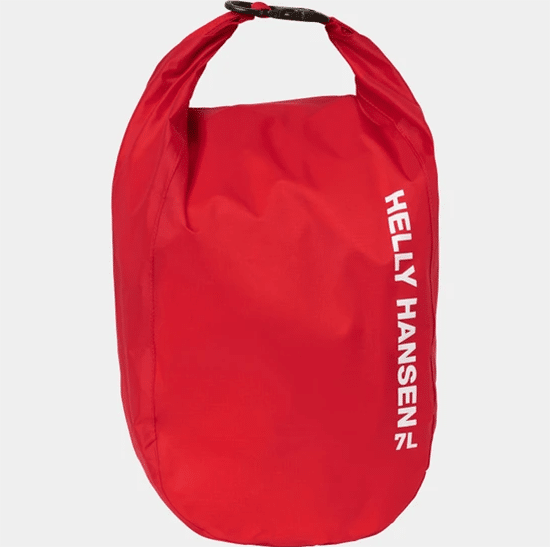
Easy Visibility: Some Helly Hansen dry bags may include transparent windows or panels, allowing you to see the contents without opening the bag. This can be particularly useful when you’re looking for a specific item or need quick access to your gear.
Attachment Points: Many Helly Hansen dry bags are equipped with attachment points or D-rings, which enable you to secure the bags to boats, kayaks, or other equipment. This feature helps prevent your gear from getting lost in the water.
Floatability: Depending on the specific model, some Helly Hansen dry bags may be designed to float. This can be advantageous in water-based activities, as it ensures your bag remains on the surface and is easier to retrieve if it accidentally goes overboard.
Quality Assurance: Helly Hansen is a reputable brand with a history of producing high-quality outdoor gear. Their dry bags are likely subject to quality control standards to ensure they meet the brand’s reputation for excellence.
Brand Reputation: Helly Hansen’s long history and strong reputation in the outdoor industry add to the credibility and trustworthiness of their products, including dry bags.
Key Characteristics of Dry Bags
Here are some key features and characteristics of dry bags:
Waterproof Materials: Dry bags are typically constructed from waterproof or water-resistant materials such as vinyl-coated fabrics (e.g., PVC or TPU), nylon, or rubberized fabrics. These materials create a barrier that prevents water from penetrating the bag.
Sealing Mechanisms: Dry bags are designed with various sealing mechanisms to ensure a watertight closure. The most common types of closures include:
Roll-Top Closure: This is the most common type of closure. You roll down the top of the bag several times and then secure it with buckles or clips. This creates a watertight seal.
Zipper Closure: Some dry bags feature a waterproof zipper. These zippers are designed to keep water out when properly sealed. They are often used in conjunction with roll-top closures for added security.
Ziplock Closure: Similar to a ziplock bag, these dry bags have a sealable opening that you press together to create a watertight seal.
Sizes and Capacities: Dry bags come in various sizes and capacities, ranging from small pouches suitable for keeping a phone or wallet dry to large duffel-sized bags for storing camping gear or clothing.
Transparent Windows: Some dry bags have transparent windows, allowing you to see the contents without opening the bag.
Attachment Points: Many dry bags come with attachment points or D-rings, which allow you to secure them to boats, kayaks, or other equipment.
Floatability: Some dry bags are designed to float, which can be useful for water-based activities where your bag might accidentally end up in the water.Common Uses for Dry Bags
- Water Sports: Kayakers, canoeists, and boaters use dry bags to keep their personal items, such as electronics, clothing, and food, dry while on the water.
- Camping: Campers use dry bags to protect gear and clothing from rain, river crossings, or wet ground.
- Hiking: Hikers may use smaller dry bags to protect essentials like maps, first-aid kits, and electronics in wet conditions.
- Travel: Dry bags can be used when traveling to protect valuable items from rain or to keep wet or dirty items separate from clean ones in your luggage.
- Beach Activities: Dry bags are handy for keeping items like towels, swimsuits, and snacks dry at the beach.
Dry bags are an essential piece of equipment for anyone who spends time outdoors or near water and wants to keep their belongings safe and dry in challenging conditions.
The choice of size and closure mechanism depends on the specific needs of your activity and the level of waterproof protection required.
What Activities are Dry Bags Useful for?
Dry bags are incredibly versatile and useful for a wide range of outdoor and water-based activities where you need to keep your belongings dry and protected from moisture, water, or other environmental elements. Here are some common activities for which dry bags are particularly useful:
Kayaking and Canoeing: Dry bags are essential for kayakers and canoeists to keep gear, clothing, and personal items dry while on the water. They ensure that your essentials stay dry, even if your kayak or canoe takes on water or you encounter rain and splashes.
Rafting and Whitewater Adventure: Rafters and participants in whitewater activities face constant exposure to water. Dry bags are crucial for protecting sensitive items like electronics, clothing, and food during these adventures.
Boating and Sailing: Whether you’re on a motorboat, sailboat, or yacht, dry bags help protect your gear and personal belongings from the elements. They are especially important for safeguarding electronics, navigation equipment, and documents.
Hiking and Camping: Dry bags are used by hikers and campers to protect gear, clothing, and essentials from rain, river crossings, or wet ground. They can also help keep food and cooking supplies dry.
Beach Activities: Dry bags are handy for beachgoers to keep towels, swimsuits, snacks, and other items dry and sand-free. They are also useful for protecting electronics from sand and water exposure.
Fishing: Anglers often use dry bags to keep fishing gear, tackle, and personal items dry while out on the water. Waterproof dry bags can help preserve the quality of equipment.
Traveling: Dry bags can be useful for travelers to protect valuable items, documents, and electronics from rain, spills, or unexpected wet conditions during their journeys.
Cycling: Cyclists may use smaller dry bags to keep items like electronics, clothing, and snacks dry during wet or rainy rides.
Winter Sports: Dry bags can be used for winter sports like skiing and snowboarding to keep spare clothing, accessories, and gear dry while on the slopes.

Emergency Preparedness: Dry bags are included in many emergency preparedness kits. They can help keep essential documents, first-aid supplies, and other critical items dry in case of natural disasters or emergencies.
Diving and Snorkeling: Dry bags designed for underwater use are often used by divers and snorkelers to protect cameras, underwater equipment, and personal items from getting wet.
Photography: Photographers, especially those in outdoor or water-related professions, use dry bags to protect their camera equipment and accessories from water damage.
These are just a few examples of the many activities for which dry bags are useful. The specific size, type, and features of the dry bag you choose will depend on the activity and the items you need to protect. Dry bags come in various sizes and styles, making it easy to find one that suits your needs.
What Factors Should You Consider When Buying a Dry Bag?
When buying a dry bag, several important factors should be considered to ensure you select the right one for your needs. Here are the key factors to keep in mind:
Size and Capacity:
Determine how much gear and items you need to keep dry. Dry bags come in various sizes, typically measured in liters. Consider your specific needs, such as whether you need a small bag for essentials or a larger one for clothing and gear.
Closure Mechanism:
Dry bags typically have roll-top closures, waterproof zippers, or ziplock closures. Roll-top closures are common and effective, but consider which type of closure you prefer and trust for your intended use.
Durability and Material:
Look for dry bags made from high-quality, durable materials. Common materials include PVC, TPU (Thermoplastic Polyurethane), nylon, and rubberized fabrics. Choose a material that suits your activity and durability requirements.
Waterproof Rating:
Check the waterproof rating of the dry bag. It’s usually expressed in terms of IP (Ingress Protection) ratings. The higher the rating, the better the bag’s protection against water and moisture. IPX7 or higher is often recommended for complete submersion.
Attachment Points:
If you plan to attach the dry bag to a kayak, boat, or other equipment, ensure it has attachment points or D-rings. These allow you to secure the bag and prevent it from floating away or getting lost.
Visibility:
Some dry bags have transparent windows or panels, allowing you to see the contents without opening the bag. This can be handy for quickly locating items.
Floatability:
If you’re using the dry bag in water-based activities, consider whether it’s designed to float. A floating dry bag is easier to retrieve if it accidentally falls into the water.
Carrying Straps or Handles:
Look for dry bags with comfortable carrying straps or handles, especially if you plan to carry the bag over long distances or while hiking.
Brand and Reputation:
Consider purchasing from reputable brands with a history of producing high-quality outdoor gear. Well-known brands often have better quality control and customer support.
Purpose and Activity:
Think about the specific activity or purpose for which you’ll use the dry bag. Different activities may require different features. For example, a dry bag for kayaking may need to be more rugged than one for beach use.
Weight and Portability:
If you’re hiking or traveling, consider the weight and portability of the dry bag when empty. Lightweight and packable options may be preferable.
Budget:
Set a budget and look for dry bags that meet your requirements within that budget. Dry bags come in a wide price range, so there are options available for various budgets.
Warranty:
Check if the dry bag comes with a warranty. A warranty can provide peace of mind in case of manufacturing defects.
Reviews and Recommendations:
Read reviews and seek recommendations from other outdoor enthusiasts who have used the same or similar dry bags. User feedback can provide valuable insights.
By carefully considering these factors and matching them to your specific needs and activities, you can choose the right dry bag to keep your gear dry and protected during your outdoor adventures.

